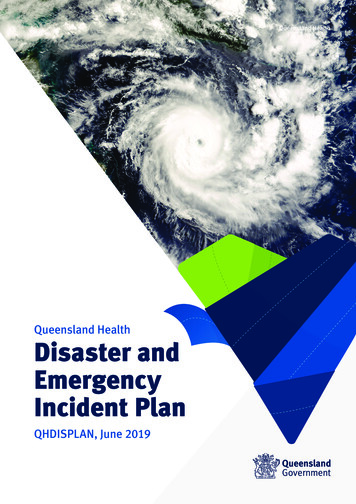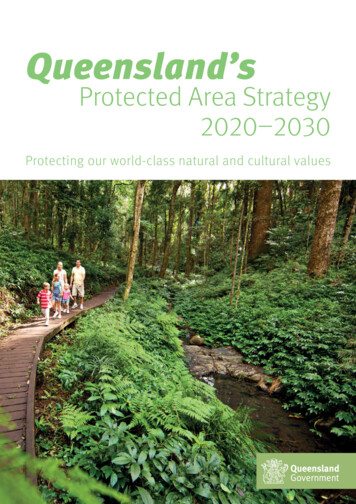
Transcription
Queensland’sProtected Area Strategy2020–2030Protecting our world-class natural and cultural values
Protected Area Strategy 2020–2030Prepared by: Department of Environment and Science State of Queensland, 2020Image: Birdsville Tourism and Events QueenslandThe Queensland Government supports and encourages the disseminationand exchange of its information. The copyright in this publication is licensedunder a Creative Commons Attribution 3.0 Australia (CC BY) licence.Under this licence you are free, without having to seek our permission, touse this publication in accordance with the licence terms. You must keepintact the copyright notice and attribute the State of Queensland as thesource of the publication. For more information on this licence, visit .enCitationDES. 2020. Queensland’s Protected Area Strategy 2020–2030: Protecting ourworld-class natural and cultural values. Brisbane, Department of Environmentand Science, Queensland Government.Cover image: Bunya Mountains National Park Tourism and EventsQueensland#31956ii
Protected Area Strategy 2020–2030Minister’sforewordQueensland is one of the most naturally and culturally diverse places on earth. It is home toincredibly unique and globally important ecosystems dating back to ancient times, with a richhistory of the oldest continuous living cultures on the planet.Queensland’s deeply cultural landscapes and places provide stories and knowledge, entwinedwith native plants and animals that have been sustainably stewarded and nurtured forgenerations by Queensland’s First Nations peoples.These landscapes support our health, wellbeing and happiness, and enable us to enjoy anoutdoor lifestyle that is envied by people around the world.Protected areas—our national parks and private protected areas—are an important part of thisconnection to nature and culture. They contribute significantly in direct financial terms, andculturally, to Queensland’s ongoing prosperity. Our national parks have been the cornerstone of avibrant tourism industry.For years, millions of visitors have flocked to Queensland’s amazing and world-class nationalparks—from ancient rainforests in Far North Queensland, precious mammal fossil sites in ouroutback interior, through to lush islands along our dramatic coastline. These areas sustain jobsand provide economic opportunities for our regions.The 2020 coronavirus health crisis is having a profound impact on both the Queensland economyin general and the tourism-based sector specifically. International and interstate visitors’ abilityto experience our national parks has been significantly reduced, with financial flow-on effectsregionally and state wide. This highlights the strong role that nature-based tourism can play inrebuilding Queensland’s economic strength as a destination of choice and generator of income.To ensure we protect these precious places for future generations, Queensland’s Protected AreaStrategy aims to significantly build on our extensive existing network of protected areas, includingour spectacular national parks, which are found in all corners of the state.Queensland already leads the way in national parks fire management, and we intend tofurther extend this work to better protect our communities, wildlife and vegetation fromuncontrolled bushfires.Over the next ten years, we plan to transform this estate to become world leaders in the waywe protect, conserve, present and harness Queensland’s natural areas for their environmental,cultural and economic values. Investing strongly in innovative partnerships will open new doorsfor ecotourism opportunities and visitor experiences, and much more.Central to this work is respecting and working in effective partnerships with First Nations peoples,whose knowledge and expertise is critical to delivering the best possible outcomes.Through world-class national parks and other protected areas we will ensure Queensland’sextraordinary nature and culture is actively supported to thrive, and protected for futuregenerations to experience and enjoy.Leeanne EnochMinister for Environment and the Great Barrier Reef Minister for Science Minister for the Artsiii
Protected Area Strategy 2020–2030The purpose of this strategy is to inspire Queenslanders and visitorsalike to feel excited and moved by the rich beauty and culturalheritage of our protected areas, and encourage partners andsupporters to invest in our unique natural environment.iv
Protected Area Strategy 2020–2030ContentsMinister’s foreword. iiiContents. 1Our vision. 2Introduction. 3Our mission. 4What will this strategy deliver?. 4What are protected areas?. 5Fast facts. 6Why are protected areas important?. 7Why do we need a Protected Area Strategy?. 13Strategic directions. 17Strategic Priorities—Grow. 20Strategic Priorities—Care. 23Strategic Priorities—Connect . 29How will we achieve our vision? . 36Image: Lake Barrine, Crater Lakes National ParkGlossary. 381
Protected Area Strategy 2020–2030OurvisionQueensland’s protected areas are world-classfor people, culture and nature2
Protected Area Strategy 2020–2030IntroductionQueensland’s biodiversity is truly extraordinary, and of significance at local,national and international levels.Queensland is home to twice as many native wildlife species as any otherAustralian state or territory. Half of the species living in Queensland areunique to the state. Queensland is also home to 72% of Australia’s native birdspecies, 85% of its native mammals and just over 50% of the country’s nativereptiles and frogs.Queensland’s rich cultural values are also of global significance, with FirstNations peoples—the world’s oldest continuous cultures—caring for land andsea Country as living cultural landscapes across thousands of generations.National parks and other protected areas play a vital role in maintainingand protecting these amazing biodiversity and cultural values, for futuregenerations, through their capacity to provide the highest levels of protectionand long-term security available.Queensland already boasts more than 1,000 national parks and otherprotected areas, five UNESCO World Heritage sites and five significantwetlands protected under the international Ramsar convention.Image: Don Rowlands, Queensland Parks and Wildlife Service ranger Luke Barrowcliffe, Goorie VisionThese areas conserve biodiversity and cultural values, and support functioningecosystems that provide essential life services like clean air and water.With the challenges of managing population growth, avoiding local andglobal biodiversity loss and mitigating and adapting to climate change,Queensland’s protected areas will play an increasingly important role inmaintaining the overall wellbeing of our environment, our economy andensuring Queensland has happy and healthy communities.Queensland’s Protected Area Strategy 2020–2030 provides a pathway togrow our protected area system and transform the way protected areas aremanaged—providing real benefits to all Queenslanders including First Nationspeoples, and putting Queensland at the forefront of conservation innovationacross the globe.3
Protected Area Strategy 2020–2030OurmissionTo enhance and maintain a system of world-class protected areas,guided by First Nations’ knowledge and expertise, global bestpractice and community needs, which ensures Queensland’sexceptional nature and culture are actively supported to thrive forfuture generations to experience and enjoy.What will thisstrategy deliver?9 Jobs growth in the tourism and conservation sectors9 Growth of the protected area system to protectnatural, cultural and heritage values9 More opportunities for the community to connectwith nature and enjoy the associated health andwellbeing benefits this provides9 Enhanced fire management in partnership withFirst Nations peoples including use of traditionalfire management practices9 Unique cultural tourism experiences, includingthose delivered by First Nations peoples onprotected areas9 Increased support for First Nations peoples’right to maintain their relationship with Country,conserve and protect it, and preserve and sharecultural connection with the broader community9 Expanded Indigenous Land and SeaRanger program9 Genuine partnerships with First Nations peoplesthat meets the aspirations of First Nations peoples9 World-class ecotourism facilities that enhance theprotection of natural, cultural and heritage values9 Improved biodiversity outcomes, reducedhabitat loss, improved protection and recovery ofthreatened species9 Support for the protection of natural and culturalvalues on private land9 Increased resilience to climate change throughcarbon sequestration9 National parks and other public protected areasare carbon neutral9 Increased resilience to climate change througha connected landscape that provides refugia fornative wildlife9 Young people and the whole community areengaged with protected areas, facilitating a lifelong appreciation of these areas and the benefitsthey provide9 Investment in innovative partnerships to grow,manage and promote protected areas9 Optimised economic assets and a diversifiedeconomic base9 Special Wildlife Reserves established onprivate land9 World-class visitor experiences that utilise thelatest technology9 International best practice protected areamanagement in partnership with FirstNations peoples9 World-class ecotourism trails are a key attractorfor tourism4
Protected Area Strategy 2020–2030What areprotected areas?Queensland’s protected area system includes a mix of State-ownedand managed protected areas, Indigenous-owned national parksjointly managed by Traditional Owners and Queensland Parks andWildlife Service, and privately owned and managed nature refugesincluding those owned and managed by Indigenous peoples.The ‘protected areas’ in this strategy concern land-based (terrestrial)areas established under the Nature Conservation Act 1992, includingnational parks, jointly managed national parks, conservation parks,resources reserves, and private land declared as a nature refuge orspecial wildlife reserve. These areas may include wetlands and riversystems, but the Great Barrier Reef and other marine protected areasare not the focus of this strategy.The International Union forConservation of Nature (IUCN)defines a protected area as:a clearly defined geographicalspace, recognised, dedicatedand managed, through legal orother effective means, to achievethe long-term conservation ofnature with associated ecosystemservices and cultural values.Image: Laura Ranger at rock art site, Cape York Queensland Government5
Protected Area Strategy 2020–2030FastfactsQueensland’s protected areasImage: Jindalba Boardwalk, Daintree National Park(as at 31 August 2020):Queensland’s protected areanetwork covers more than 14.2million hectares (8.26%) ofQueensland—more than twice thesize of Tasmania149 threatened species areonly found in Queensland’sprotected areasMore than 2.5 million hectaresof protected areas are managedby, or in partnership with, FirstNations peoplesQueensland is home to5 World Heritage areasTerrestrial protected areas containsamples of 82% of Queensland’s‘endangered’ or ‘of concern’regional ecosystems6% of Queensland’s regionalecosystems are found only onnature refugesQueensland’s nature refugenetwork includes 534 nature refugesand is the largest private protectedarea network in the country—morethan 4.47m haQueensland’s protected areanetwork is made up of: 69% public protected areas(national parks, conservationparks and resources reserves) 31% private protected areas(special wildlife reserves andnature refuges)6
Protected Area Strategy 2020–2030Why areprotected areasimportant?Image: Archer River, Mungkan Kandju National ParkCarbon sequestrationProtection and regeneration oftropical forests is particularlyimportant for climate changemitigation and adaptation. Oldgrowth forests with large woodyspecies, like those found in thewet sclerophyll forests in the WetTropics World Heritage Area, are thelargest terrestrial carbon stores andare believed to be active sinks.Mangroves are capable ofsequestering very large amountsof carbon, providing effective andvery long-term carbon storage.Mangroves also prevent erosionand effectively reduce the powerof waves, protecting coastalcommunities from damagingseas and storm surges. Nearly50% (441,000 ha) of Australia’smangroves are found inQueensland, an estimated 14%(62,000 ha) of which are in aprotected area.While the conservation of nature is the primary purpose of Queensland’sprotected areas, their value extends well beyond this to include many otherenvironmental, economic, cultural, social and health benefits.Climate changeProtected areas play an important part in local and global responses toclimate change, and have a role in mitigating climate change and adaptingto its effects, including enhancing ecosystem resilience to climate changeand providing refugia for native wildlife. As the effects of climate changeincrease, protected areas will become even more essential and at the coreof how society, biodiversity and landscape processes change and adapt tonew environmental conditions. Natural systems, of which protected areasare a part, collect vast amounts of carbon from the atmosphere, storingit in vegetation and soils, which prevents it from moving back into theatmosphere. In Australia and New Zealand, 10 billion tonnes (10 gigatonnes)or 12% of the total carbon stock, is believed to be stored in protected areas.Queensland’s protected areas contain a number of high carbon-sequestrationecosystems, including tropical and mangrove forests.Protected areas help to maintain ecosystem integrity and services, especiallywhere those systems are under pressure. In places where populations ordevelopment pressures are particularly strong, protected areas play anespecially crucial role in the supply of ecosystem services. Protected areas area cost-effective way to mitigate the impacts of many types of natural disaster,including floods, storm surges, droughts and desertification.7
Protected Area Strategy 2020–2030Threatened species*Queensland’s protected areas support many threatened species. Threatenedspecies are those native species listed under the Queensland NatureConservation Act 1992 or Commonwealth Environment Protection andBiodiversity Conservation Act 1999 as being at risk of extinction. There arenearly 1,000 species currently recognised as threatened in Queensland.Protected areas are critical to the conservation of threatened species. Arecent scientific assessment report noted that conservation actions includingprotected areas have been successful in preventing the extinction of somespecies globally.1 More than 72% of threatened species listed under theNature Conservation Act 1992 are found in national parks and other publicprotected areas, with about 26% of Queensland’s threatened species eitherhighly or entirely reliant on these areas for their survival. Significantly, 149threatened species are found only in Queensland’s protected areas.Protected areas that are particularly important for threatened speciesprotection include Blackdown Tableland National Park, Glass HouseMountains National Park, Lamington and Mount Barney national parkswithin the Gondwana World Heritage Area, and Wooroonooran, Daintreeand Mt Lewis national parks within the Wet Tropics World Heritage Area. It isparticularly important to invest in proactive management of these areas aspart of the broader government and community contribution to protectingthreatened species across the landscape.1IPBES. 2019. Summary for policy makers of the global assessment report on biodiversityand ecosystem services of the Intergovernmental Science-Policy Platform on Biodiversityand Ecosystem Services.*Current as at 31 August 2020Black-clubbed Spider OrchidImage: Black-clubbed Spider Orchid Mike Mathieson, Queensland HerbariumOf the 85 threatened orchids in Queensland, 39 arecurrently believed to be entirely reliant on protectedareas for their survival. The Black-clubbed Spider OrchidCaladenia atroclavia is one such species. Known onlyfrom Girraween National Park and the surrounding area,it is protected by the rock slabs and spectacular boulderpiles of the natural landscape in the national park, andcan be aided through the management of fire in theprotected areas.This spectacular ground orchid flowers in the spring.8
Protected Area Strategy 2020–2030Image: Brown Lake, Naree Budjong Djara National Park (Minjerribah/North Stradbroke Island)Ecosystem services‘Ecosystem’ is a term to describe the way plants, animals, microorganismsand the non-living environment interact together in a complex unit. There aremany different types of ecosystems which provide different types of services.Ecosystem services are those benefits people obtain from both the living andnon-living natural environment. Types of ecosystem services include thingslike drinking water, clean air, pollination, flood control, the creation of newsoils, and genetic resources.Intact ecosystems, like those found in protected areas, offer a natural bufferto protect communities against disasters like storms and flood events that arebeing worsened by climate change, and provide the best possible opportunityfor species and ecosystems to adapt as the climate changes.Ecosystem services also provide economic benefits to the agriculture sectorthrough, for example, nutrient cycling, soil retention, crop pollination andwater provision.Different people in our community value different ecosystem services, andmany people may not realise which ecosystems are responsible for providingthem. As clearing and landscape fragmentation increase, protected areas areincreasingly relied upon to provide ecosystem services.9Mount Bauple National Park(scientific)—protectinggenetic resourcesThis comparatively small nationalpark protects the wild geneticstock from which the macadamianut industry was developed.Macadamia integrifolia is avulnerable species and in the wildgrows in types of vine forest thatare particularly threatened by landclearing and fragmentation. MountBauple is very important to thephysical and genetic survival ofthis species in the wild.M. integrifolia is the subject ofextensive research to preventits further decline and to protectits genetic integrity. Researchorganisations (CSIRO, QueenslandHerbarium), educators (universitiesand colleges), conservation groups,industry groups and museumshave carried out ecological andtaxonomic research on the park.
Protected Area Strategy 2020–2030Image: Queensland Parks and Wildlife Service rangers Luke Barrowcliffe, Goorie VisionConnection to CountryThe conservation values of Queensland’s protected areas are indivisible from their culturalsignificance for First Nations peoples, who have been stewarding the landscape for thousandsof generations. Protected areas provide opportunities to recognise and respect First Nations’rights and interests; and to work together with First Nations peoples, whose spiritual and physicalconnection to the land and specialised knowledge provide opportunities to collectively nurture andprotect the environment.‘Country’ is a term used to describe a culturally defined area of land associated with a particular,culturally distinct group of people or nation. The term Country is often used by First Nations peoplesto describe family origins and associations with particular parts of Australia. First Nations peopleshave diverse relationships with, connections to, and understandings of, the Australian environment.Some of these relationships are based on the traditional knowledge and practice passed down fromgeneration to generation, while others have resulted from the various impacts of colonisation.Protected areas present a unique opportunity to learn from and partner with First Nations peoples.They enable the integration of traditional knowledge with modern practices, such as traditionalfire management practices. The Queensland Government is committed to protecting these specialplaces together. By partnering with First Nations peoples, all Queenslanders benefit from a uniqueknowledge and perspective of Country, and the building of a shared future together.Queensland Indigenous Land and Sea Ranger ProgramThe Queensland Indigenous Land and Sea Ranger Program works in partnership with remote andregional communities to support the employment of more than 100 rangers in 24 communities.Key to the program’s success is the adoption of a model of self-determination where communitiesidentify their own priorities, employ their own rangers and help build Queensland’s capacity toadapt to a changing world.By working in true partnership, we engage in two-way learning and benefit from unique andcrucial support to respond to Queensland’s biggest strategic challenges and opportunities.By respecting and harnessing the leadership and knowledge of Queensland’s First Nationspeoples, together we are delivering better environmental, cultural and economic benefits forall Queenslanders.10
Protected Area Strategy 2020–2030Image: Jelluragal Walkabout Tour, Burleigh Heads Queensland GovernmentNature and healthThe majority of Queenslandersnow live in cities and our childrenare spending more of their leisuretime indoors. New terms like‘nature deficit disorder’ and the‘extinction of experience’ areemerging as ways to describe howmore people, particularly childrenand teenagers, are losing touchwith their surrounding naturalenvironment. An active connectionwith nature offers a way to addressa range of health and wellbeingissues, and Queensland’sprotected areas provide valuableopportunities to get outdoors andconnect with nature.Health and wellbeingProtected areas provide community benefits as places for all people toappreciate and enjoy. They help build thriving communities in a number ofways. Protected areas offer chances for people to connect with nature andculture, and enjoy recreational activities. They also provide far-reachingeconomic, cultural, social, and health benefits. The flow-on effect of this isthat a community that values nature, and culture and the environment, ismore likely to want to protect it.Protected areas are places where Queenslanders, visitors and touristsare able to undertake nature-based outdoor leisure and active recreation.Studies show that exposure to nature and nature-based activities, andconnection with culture and culture-based activities, can have significantpositive impacts on health and wellbeing, including psychological health.Opportunities to experience and connect with nature and culture arebecoming increasingly important as populations and urban density increase.For all Queenslanders, protected areas are becoming an increasinglyimportant way of accessing nature and culture.The inter-relationship between human health and wellbeing andenvironmental health, and the associated benefits, are becoming betterunderstood. The Queensland Government encourages outdoor activerecreation in parks and forests as a part of the ‘Keep Queenslanders healthy’Advancing Queensland Government priority and Activate! Queensland2019–2029. It is a growing area of focused research and the QueenslandGovernment is currently investigating the socio-economic value of protectedareas such as national parks.The psychological or mental health benefits of nature for individuals andsociety should not be underestimated. Studies have shown that nature canfoster psychological wellbeing, reduce anxiety and stress, improve selfesteem, enhance productivity, reduce crime, promote healing and mentalhealth, and reduce symptoms of attention deficit hyperactivity disorder inchildren.11
Protected Area Strategy 2020–2030EconomyGlobally, protected areas are recognised as important contributors to localand regional economies. While the primary objective of protected areas suchas national parks is conserving nature, other recognised objectives includecontributing to local economies through tourism.2 In Queensland, protectedareas provide a focal point for the tourism industry with many local economiesrelying on business generated by their visitors. A recent study by The Universityof Queensland showed that in 2018, national park generated spending3 in thisstate contributed at least 297 million to the economy (Gross State Product),which in turn supported at least 2,725 total jobs (based on spending that wouldnot have occurred in Queensland if the opportunity to visit national parks hadnot been available—considered a lower bound measure). For those visitors whostated that national parks were ‘very important’ to their travel and spending inQueensland, these figures increase to 1.98 billion for Gross State Product and17,241 total jobs respectively (considered the upper bound measure). This studyalso estimated the dollar value of the net benefits to park visitors (consumersurplus) which adds another 659 million per annum, of which 238 millionaccrues to Queenslanders.Protected areas and the economyResearch by The University ofQueensland showed that in 2018,expenditure generated by visitorsto Queensland’s national parkswas estimated between 419million and 2.64 billion, whichin turn supported between 1,933and 11,877 direct jobs and up to17,241 total jobs for Queensland.The Benefit-Cost Ratio or return oninvestment (in terms of park visitormanagement costs) is high–estimated at between 3.9 (usingthe most conservative approach)and 10.5 (using the consumersurplus benefits to all visitors).In addition, the Queensland Tourism Industry Council reports that more than324,000 international visitors took part in an Indigenous tourism activity, andmore than 120,000 domestic overnight trips to Queensland included a FirstNations tourism experience.The economic benefit contributed by national parks and other publicprotected areas (parks) tends not to be immediately recognised in dollarvalue terms. This is unlike many other tourist attractions. However, parksand park use generates employment across multiple sectors—includingpeople working on parks as rangers and contractors; First Nations rangergroups; joint management of parks with First Nations peoples; and jobsassociated with tourism, building and construction, education, leisure,fitness, outdoor recreation, wellbeing, conservation, biodiscovery, researchand other associated industries. As well as generating employment for FirstNations peoples, investing in protected areas supports opportunities for selfdetermination, including in economic development.In more remote areas, the visitors that protected areas attract play asignificant role in supporting local businesses and regional economies. Morethan 90% of Queensland’s public protected area estate* is located outside ofSouth East Queensland, providing employment opportunities and deliveringsignificant economic benefits for regional Queensland.2For example, other objectives of IUCN Category II National Parks include ‘to contribute tolocal economies through tourism’.3‘National park generated spending’ is defined as expenditure by visitors who statedthat national parks were ‘very important’ to their travel and spending decisions. The‘unambiguous component’ (lower bound) of national park generated spending is that whichis unambiguously due to the attraction of national parks, defined as spending that would nothave been made in Queensland if the opportunity to visit national parks was not available.*Current as at 31 August 202012
Protected Area Strategy 2020–2030Why do we need aProtected AreaStrategy?This Strategy outlines a 10-year pathway to build on Queensland’s already extensive network of protectedareas, positioning the state to meet future challenges, capitalise on opportunities, and respond to thecommunity’s evolving needs and expectations. This Strategy is guided by global, national and statedrivers and responds to a range of challenges and opportunities, including climate change, biodiversityloss, population growth, evolving conservation markets, demand for ecotourism, and emerging science toachieve improved outcomes.The Queensland Government is committed to strengthening the way we partner with First Nations peoplesto deliver real change and real outcomes through a genuine partnership approach. Rethinking ourapproach to protected area management, including building on existing joint-management approachesand developing new co-stewardship models, is an important part in reframing this relationship.Acknowledgment of the rights and interests of First Nations peoples, including traditional ownership andconnection to Country, is a key focus of this Strategy.The benefits that protected areas provide are much broader than the conservation of nature. Theyhold the stories of First Nations people, and connect us all to the oldest continuing cultures on earth.Additionally, as Queensland’s population grows and towns and cities become more urbanised,opportunities for outdoor recrea
Queensland's rich cultural values are also of global significance, with First Nations peoples—the world's oldest continuous cultures—caring for land and sea Country as living cultural landscapes across thousands of generations. National parks and other protected areas play a vital role in maintaining

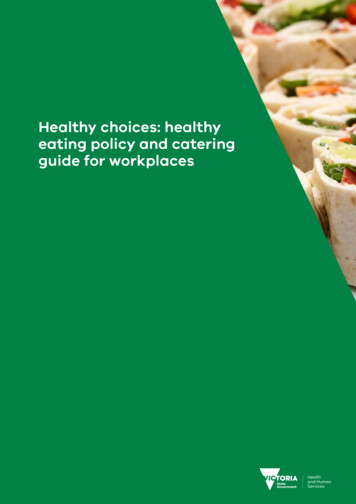

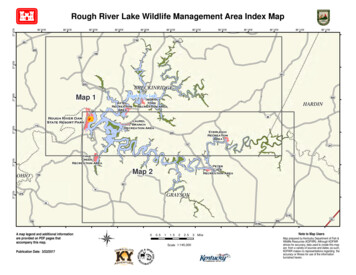

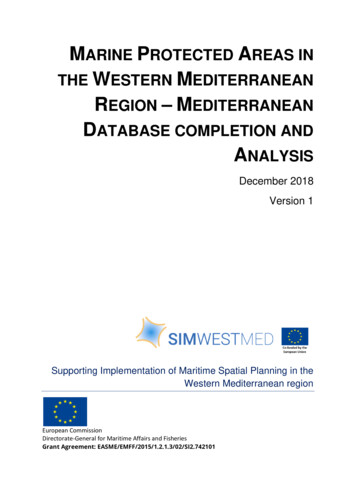
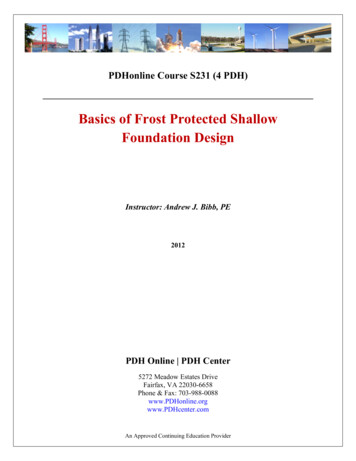

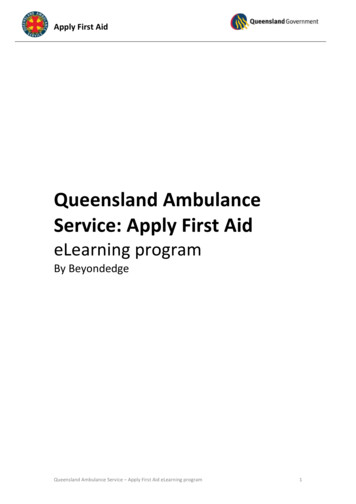
![Clinical Biostatistics [CLB]](/img/6/study-guide-clb-2021.jpg)
